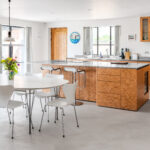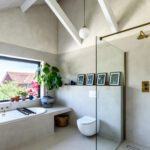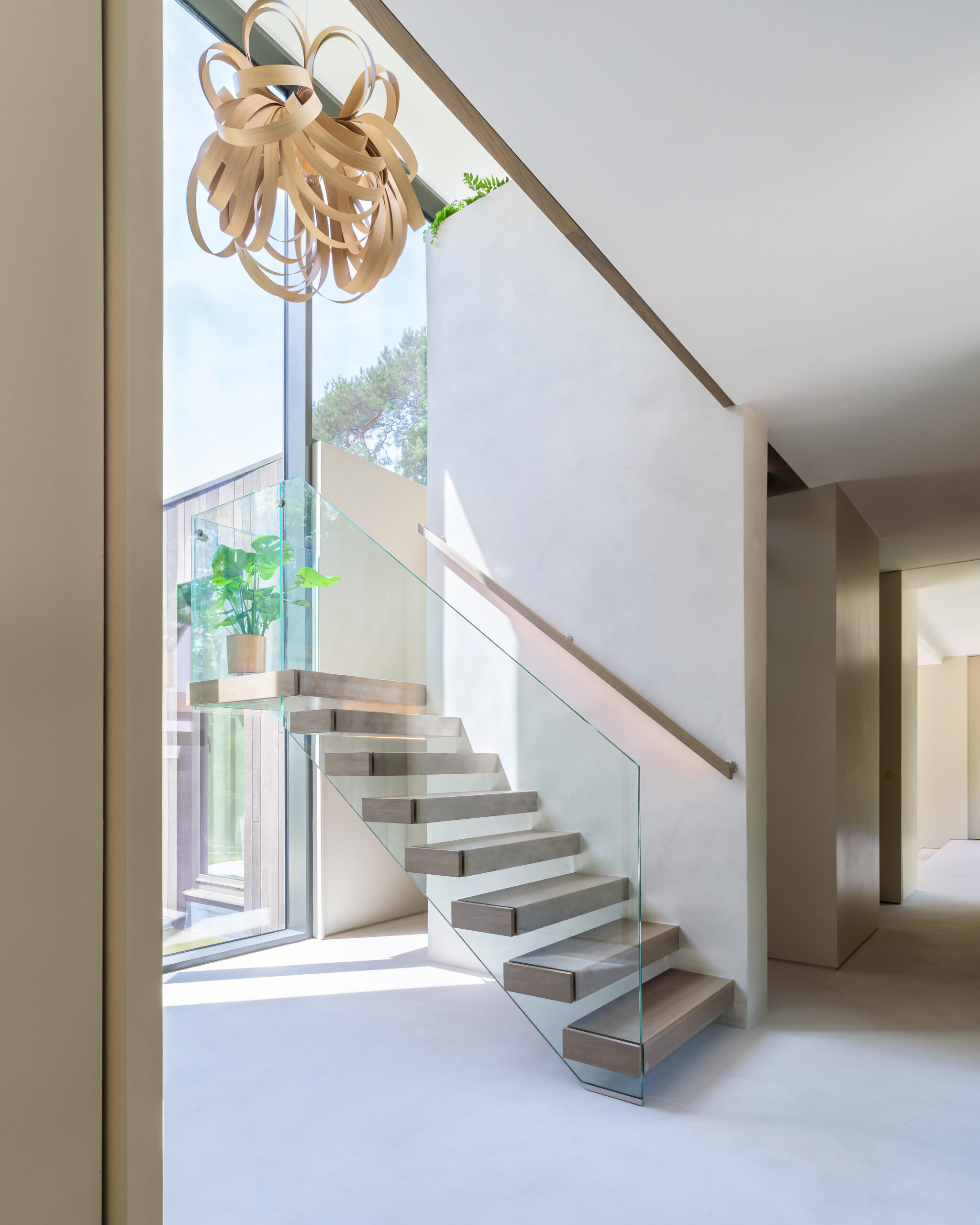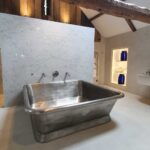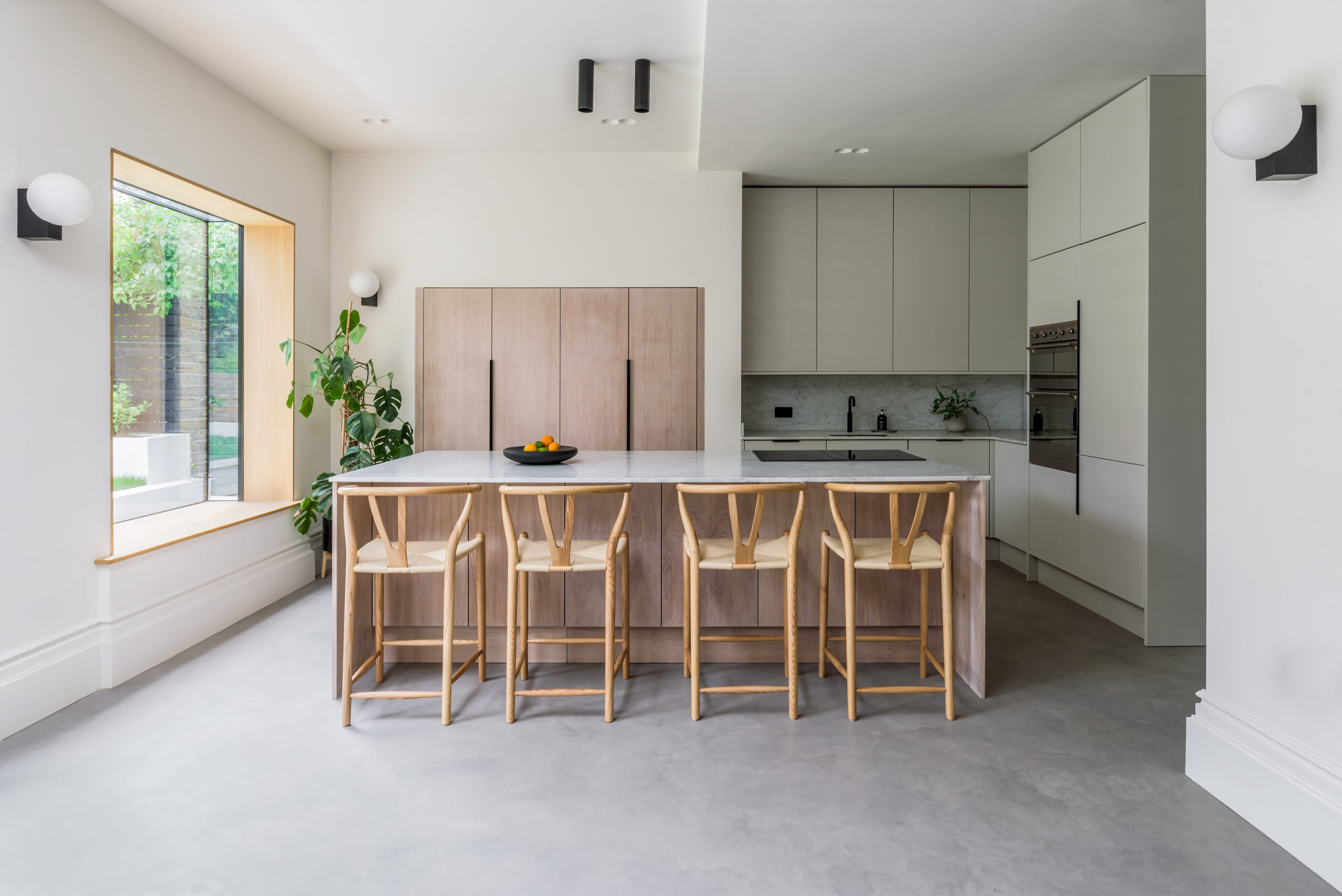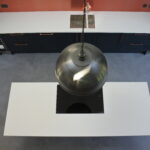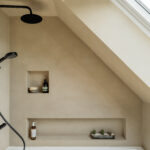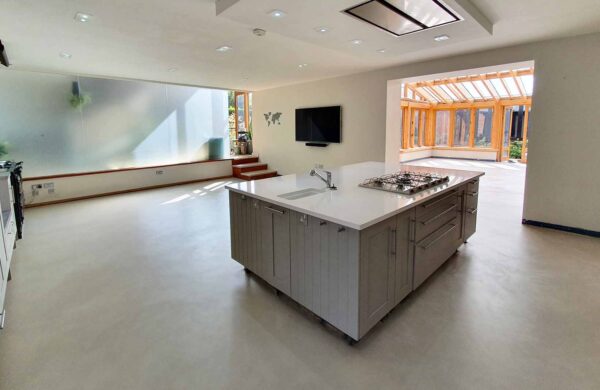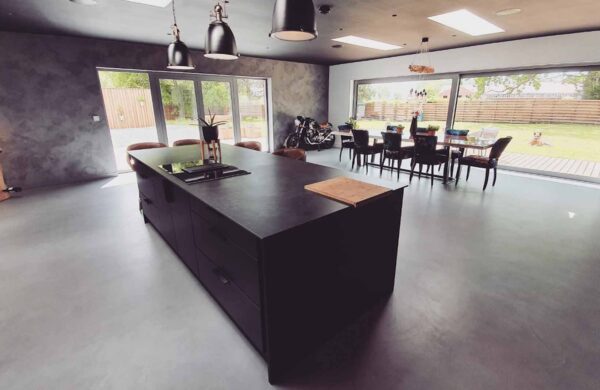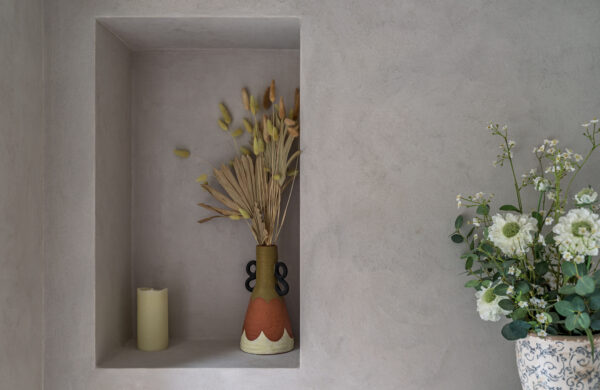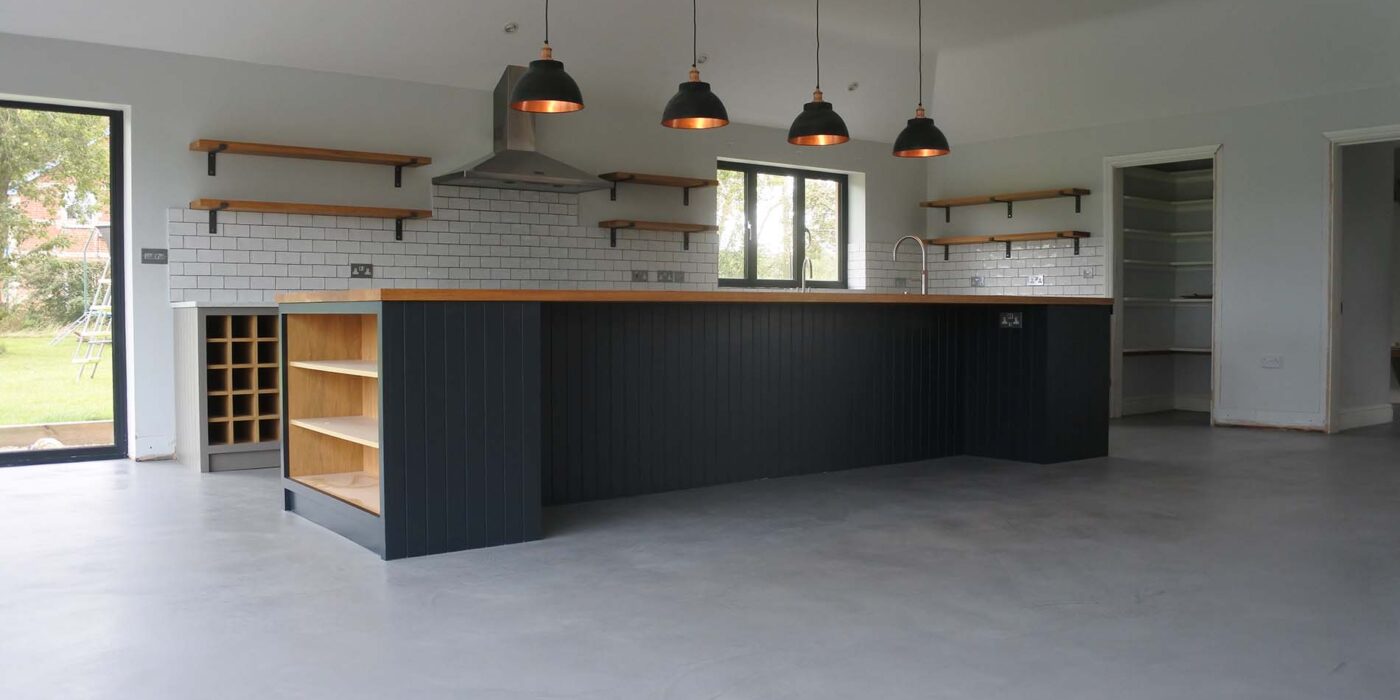
At Forcrete, we know that microcement doesn’t just stand alone. It shines brightest when paired with the right materials. One of the most common questions we receive from designers, architects, and clients is:
What materials work best alongside microcement?
From warm timber tones to sleek metals and light-reflecting glass, the beauty of microcement lies in its ability to blend seamlessly into mixed-material environments. Whether you’re designing a modern kitchen, a minimalist bathroom or an open-plan commercial space, knowing how to combine finishes can transform the entire look and feel.
Let’s explore how to pair microcement with wood, glass and metal for bold, balanced and beautiful results.
Why mix materials with microcement?
Microcement is a versatile, seamless surface finish. It works across floors, walls, furniture, kitchens and bathrooms, but its true strength lies in how well it complements other textures and finishes.
Combining microcement with contrasting materials:
- Adds warmth and balance
- Enhances visual depth
- Creates a modern, layered look
- Improves light reflection and spatial flow.
It’s no surprise that pairing materials like timber, glass, and metal with microcement is a growing trend worldwide.
Pairing microcement with timber: Warmth meets minimalism
Wood and microcement are natural companions. While microcement brings a clean, contemporary aesthetic, timber adds warmth and texture to the look.
Popular applications include:
- Microcement floors with timber ceilings or beams in loft-style apartments
- Wall panelling in oak, birch or walnut to warm up grey-toned microcement walls
- Floating timber vanities or stair treads paired with microcement risers.
This pairing suits residential settings, where clients desire a tactile, welcoming space that doesn’t compromise the clean, modern edge.
Use lighter woods, such as ash or beech, for a Scandinavian feel, or opt for darker options like walnut or smoked oak for contrast.
Combining microcement and metal: A modern industrial edge
Microcement has long been favoured in industrial-style interiors, and pairing it with raw or brushed metals only enhances that effect.
Try mixing with:
- Brushed brass or copper tapware against light microcement bathroom walls
- Black steel-framed doors and windows with microcement floors
- Powder-coated metal staircases or balustrades for a sleek, structural look.
This finish pairing suits both residential and commercial spaces, offering a modern, durable combination that feels architectural and grounded.
Use metal to provide definition. Black powder-coated steel or bronze accents can frame microcement beautifully without overpowering it.
Glass and microcement: Light, reflection and openness
Glass is the ideal counterpoint to microcement’s matte, stone-like texture. It introduces light, reflection and softness to more solid architectural elements.
Design ideas include:
- Walk-in microcement wet rooms with frameless glass screens
- Glass balustrades paired with microcement staircases
- Glass-fronted kitchen cabinetry offset by microcement splashbacks or floors.
In smaller spaces, this combination can help bounce light around the room, creating a more open and spacious feel, especially in bathrooms, hallways or basement conversions.
Keep lines clean and hardware minimal when working with glass, allowing the texture contrast to do the talking.
Getting the balance right: Colour, tone and texture
When combining microcement with other materials, harmony arises from the coordination of colour and texture.
- Choose complementary tones (warm greys with warm woods, cool greys with cooler metals)
- Introduce layered lighting to highlight surface textures
- Avoid overloading. Pick two to three finishes and repeat them across the space.
Remember, microcement is available in a wide range of colours and finishes. At Forcrete, we offer custom blends to suit your project, whether you’re working with honey-toned oak or deep patinated steel.
FAQs: What people also ask about combining microcement with other materials
Can you mix microcement and wood in the same room?
Yes, absolutely. Combining microcement with wood is one of the most popular and effective design approaches. Use microcement on floors or walls, and introduce timber through furniture, panelling, or ceilings to create warmth and balance.
Does microcement go well with metal?
Yes. Microcement and metal both suit minimalist and industrial interiors. Brushed, blackened or patinated metals contrast beautifully with the smooth, organic feel of microcement.
Is microcement too cold-looking without other materials?
On its own, microcement can appear cool or minimal, which many people love. However, combining it with wood or textiles is a great way to soften the space, creating a more inviting or residential feel.
Will microcement and glass work in a bathroom?
Yes, glass partitions, shelves and basins work beautifully with microcement walls and floors in bathrooms. This pairing feels clean, contemporary and allows light to flow freely.
Why choose Forcrete for your microcement project?
At Forcrete, we work closely with installers, designers and architects to ensure every project reflects the full potential of microcement. Our fully waterproof, high-strength, sealer-free system is trusted by professionals across the UK and beyond.
We understand how to balance aesthetics with performance, and we’re always here to advise on how microcement works alongside other materials, whether you’re building a high-end spa, a boutique retail space or your dream home kitchen.
Let’s bring your vision to life
Looking to combine microcement with timber, metal or glass in your next project? Please speak to a Forcrete-approved installer or contact our team for expert advice on colour matching, technical preparation, and system selection.
Contact us today to discover how we can help shape your next space.

